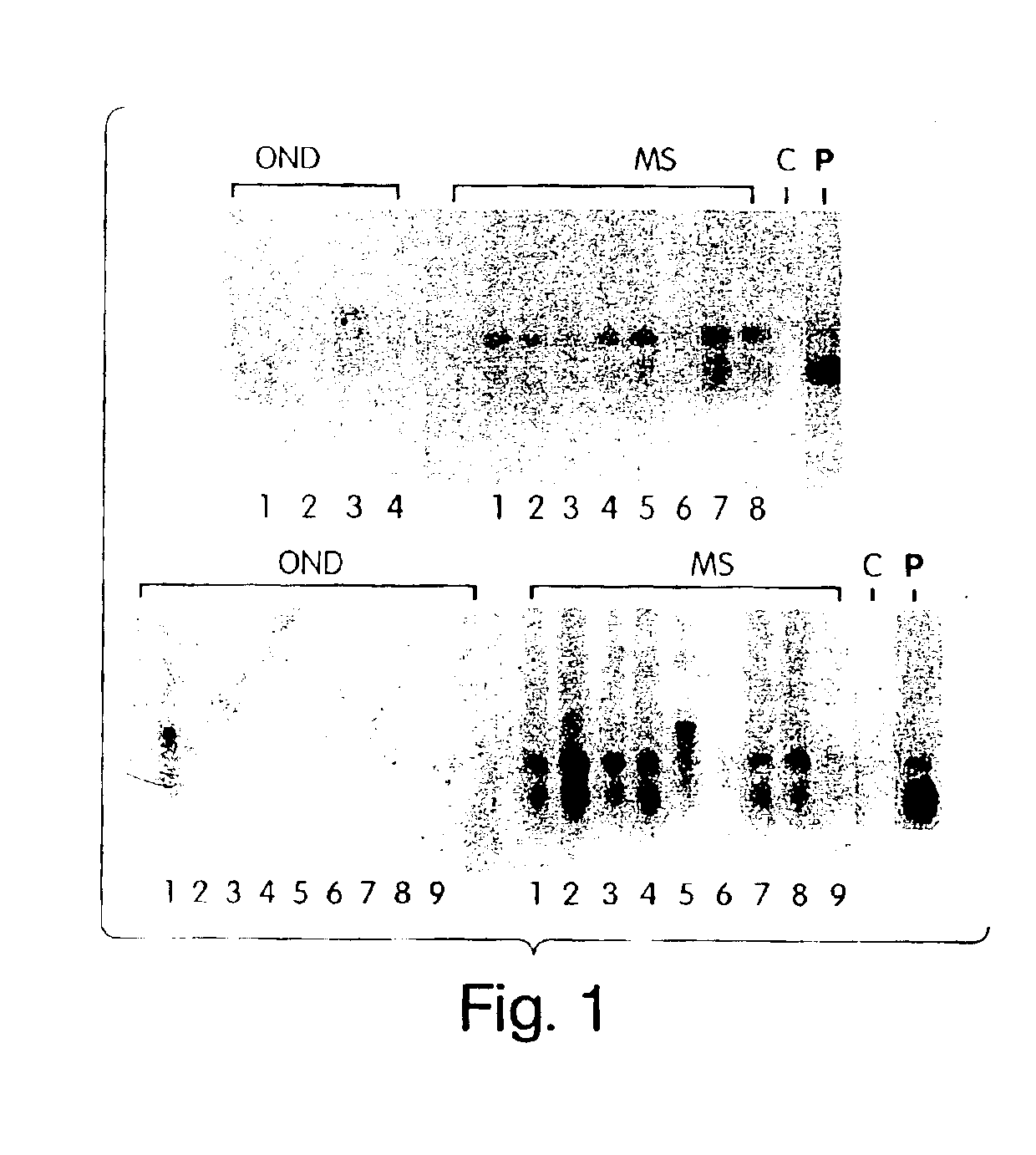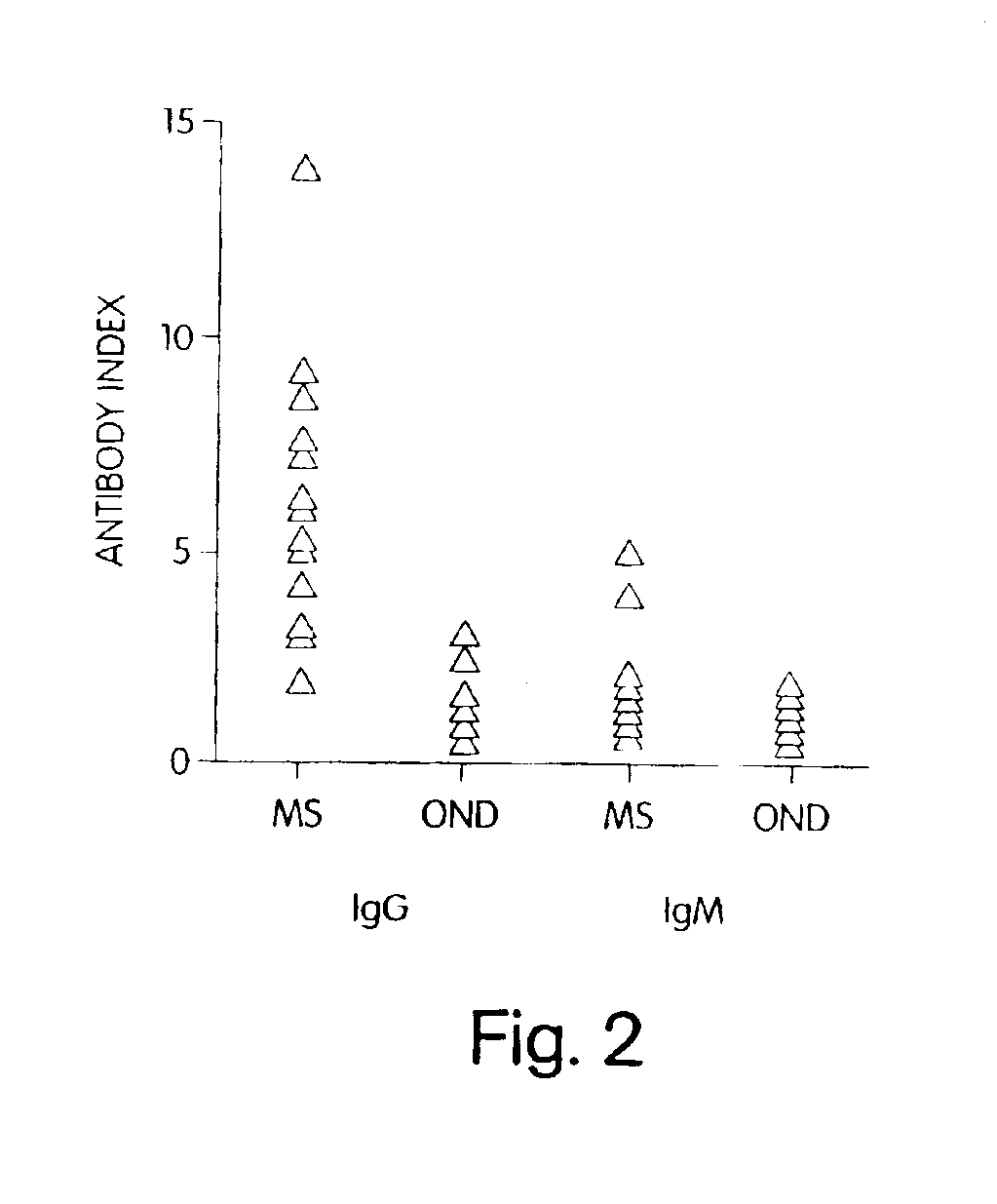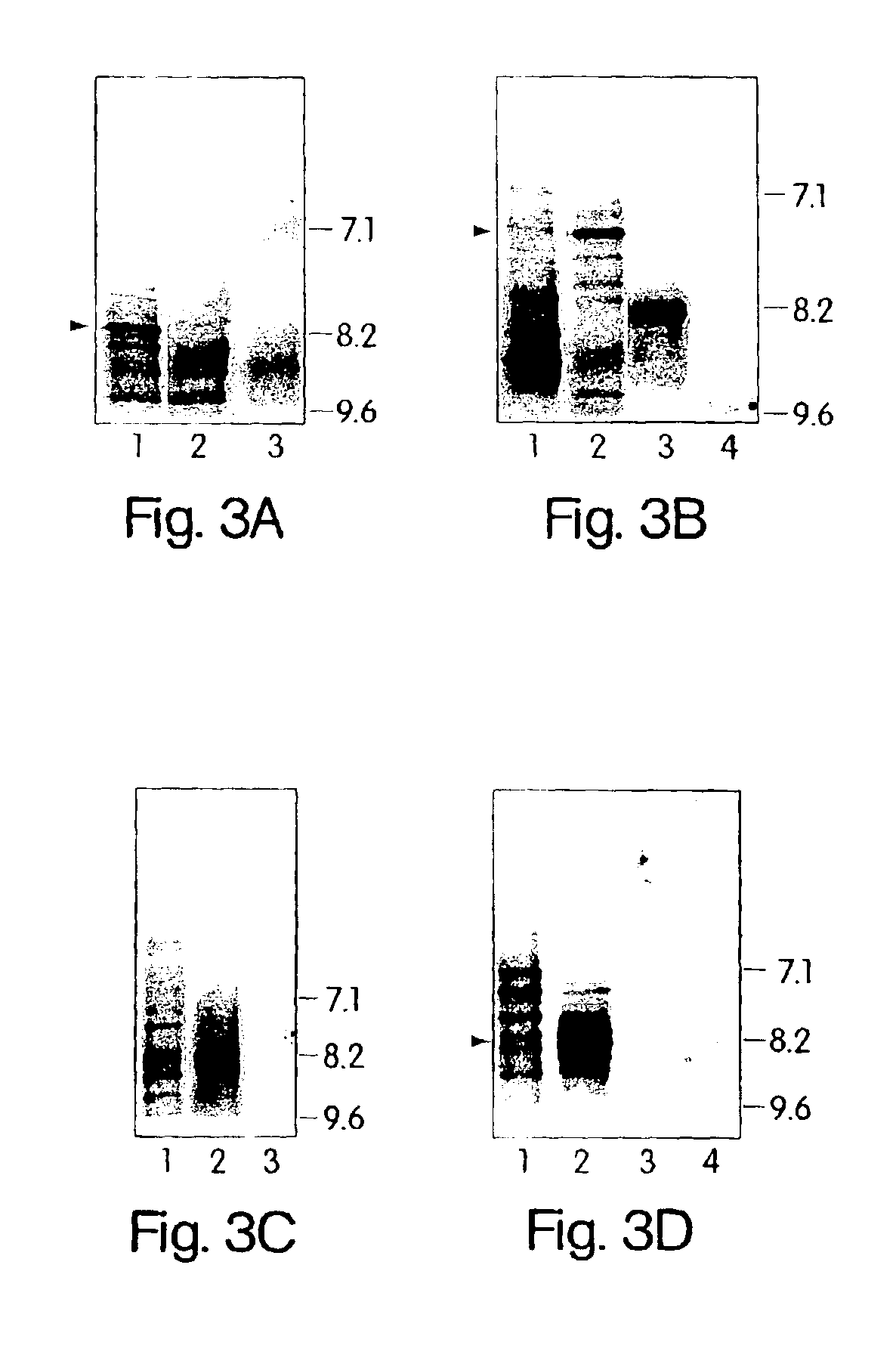Methods and reagents for the treatment of multiple sclerosis
a technology for multiple sclerosis and reagents, applied in the field of multiple sclerosis methods and reagents, can solve problems such as difficult to justify, and achieve the effects of reducing costs, improving treatment effectiveness, and improving treatment effectiveness
- Summary
- Abstract
- Description
- Claims
- Application Information
AI Technical Summary
Benefits of technology
Problems solved by technology
Method used
Image
Examples
example 1
Identification of the Presence of C. pneumoniae in Individuals with MS
A) Methods
[0098]The study evaluated 17 patients with relapsing remitting MS (4M / 13F, mean age 31 years) at the time of diagnosis of clinically definite disease (Table 3) and 20 patients with progressive MS (10M / 10F, mean age 40 years) (Table 4). Among the 17 relapsing remitting MS patients, two patients were on β-IFN that was instituted four weeks and 16 weeks, respectively, prior to the enlistment of these patients for the lumbar puncture. Both patients (#5 and #14) were also recovering from a recent clinical worsening. The remaining 15 patients were not on any immunosuppressive or immunomodulatory drugs. All except three of these 17 MS patients had oligoclonal bands in the CSF (Table 3). Among the patients with progressive disease, two had primary progressive disease, four had relapses with sequelae (relapsing progressive disease), and the remaining 14 had secondary progressive disease. Four of...
example 2
Detection of the C. pneumoniae 16S RNA Gene in the CSF of MS Patients
A) Materials and Methods
Patients and Patient Selection
[0116]Seventeen patients with relapsing-remitting MS, six patients with progressive disease (five secondary progressive, one primary progressive) who satisfied the Poser criteria for definite MS, were selected for the study. Age and gender matched controls were recruited from 13 patients with other neurologic diseases (OND) in whom CSF was being obtained for diagnostic studies. In addition, CSF from two patients with subacute sclerosing pan encephalitis were examined in the immunoblot assays.
PCR Amplification of 16S rRNA Gene of C. pneumoniae
[0117]To at least 300 μl of CSF sample in its original collection tube, 200 μl of HBSS containing 0.25% trypsin, 1 mM EDTA at pH 7.2 was added to achieve a final concentration of 0.1% trypsin. The sample was then vortex mixed and incubated at 37° C. for 30 minutes. Following incubation, the sample was again vortex mixed and...
example 3
Cationic Anti-Chlamydial Antibodies in the CSF of Patients with MS
[0120]To further demonstrate that C. pneumoniae infection is causal to the development of MS, we analyzed the specificity of the intrathecal humoral response and, in particular, the reactivity of the oligoclonal bands from patients with relapsing remitting and progressive MS against C. pneumoniae antigens. In virtually every chronic infection of the CNS, increased levels of immunoglobulins that recognize the pathogen are synthesized exclusively within the CNS compartment and are seen as oligoclonal bands by IEF methods. In MS, oligoclonal bands are a hallmark of the disease, although the antigenic specificity of these bands has been unknown. Described below are experiments that examine the pattern and specificity of reactivity of oligoclonal bands (representing intrathecal antibody synthesis) to C. pneumoniae, MBP, measles, and HSV-1 antigens in MS patients and OND controls.
A) Materials and Methods
Patients and Patient...
PUM
| Property | Measurement | Unit |
|---|---|---|
| Time | aaaaa | aaaaa |
| Time | aaaaa | aaaaa |
| Time | aaaaa | aaaaa |
Abstract
Description
Claims
Application Information
 Login to View More
Login to View More - R&D
- Intellectual Property
- Life Sciences
- Materials
- Tech Scout
- Unparalleled Data Quality
- Higher Quality Content
- 60% Fewer Hallucinations
Browse by: Latest US Patents, China's latest patents, Technical Efficacy Thesaurus, Application Domain, Technology Topic, Popular Technical Reports.
© 2025 PatSnap. All rights reserved.Legal|Privacy policy|Modern Slavery Act Transparency Statement|Sitemap|About US| Contact US: help@patsnap.com



